
A Weekly Update from the Red River Farm Network
Monday, August 24, 2020

RRFN Crop Tour Presented by Pioneer Starts Today – The Red River Farm Network Crop Tour, presented by Pioneer, kicks off today. It will be a packed week, traveling across the Dakotas and Minnesota looking at crop conditions. “We’ve got areas where the crop is looking really good, areas that struggled with rain and other areas that struggled in the spring. The tour will take a look at all of that,” said Zach Fore, product agronomist, Pioneer. “One positive this year for growers in the region so far is the heat. Last year, we got through the summer okay, but then we didn’t get enough heat in the fall to finish the crop and get it harvested. This year, the corn is farther ahead.” Listen to the story.
Pro Farmer Recaps Midwest Crop Tour – Pro Farmer is forecasting a national corn yield of 177.5 bushels per acre. That’s far below USDA’s latest estimate of nearly 182 bushels per acre. The final Pro Farmer soybean estimate is 52.5 bushels per acre, which compares to a 53.3 bushel per acre number in the August USDA crop report. In the state breakdowns, Pro Farmer forecast Minnesota corn yields at 199 bushels per acre; the soybean yield was estimated at 51 bushels per acre. Crop scouts estimated South Dakota corn yields at 164 bushels per acre and soybean yields at 51 bushels per acre.
Crop Conditions Vary – There’s never a shortage of variability in the condition of the crop. Pioneer Strategic Account Manager Wade Gubrud covers southeast North Dakota, northeast South Dakota and a potion of west-central Minnesota. “On my northern end, the crop has suffered from too much moisture,” said Gubrud. “As we move into that Milbank (South Dakota) area, we’re not long on rain. We could use some more and there has been some drought stress.” It’s been said soybeans are made during this month of August. “Our pod count is set and the number of seeds that we’ll produce, but seed size is 30 percent of your yield.” Over the next few weeks, Gubrud says that percentage of yield is still be determined and it will depend on how the crop finishes. Gubrud was part of the Pioneer Revolution Plot Tour at Gwinner, North Dakota.
Pioneer Agronomy Update – In this week’s Pioneer Agronomy Update, Pioneer field agronomist J.J. Jaehning highlighted nitrogen issues. “Mother Nature is trying to rob it from us every year,” said Jaehning. “As you drive the countryside now, you see a lot of yellowed or fired corn. That’s indicative of volatilization, denitrification or leaching; there’s a lot of different ways to lose N.”
A Year of Saturated Soils – Fields in the Valley City, North Dakota area are saturated and farmer Monte Peterson says it’s been a struggle all year. “We’ve had saturated soils ever since planting and last fall, for that matter. It was a struggle to get acres in, but some fields look pretty darn good,” says Peterson. “The corn acres we managed to get in look pretty good and some soybean fields look excellent. Then, if you look across the road, you think the crop had wet feet too long.” Peterson didn’t get all of the 2019 corn harvested and he’s still working prevent plant ground. “We managed to get a lot of it sprayed and dry enough to work some stalks in, but still want to do more work. Our intentions were to seed a cover crop this week, but with the recent rains, the fields will need to dry out more before we get in them.”
More Goss’s Wilt Showing Up in ND Corn Fields – Goss’s Wilt has been showing up in North Dakota corn fields this year. “Two to three weeks ago, severe storms went through and that’s a recipe for the bacterial disease,” said Andrew Friskop, plant pathologist, NDSU Extension. “Most of the disease has been spotty, along the field edges and maybe a pocket in the field. However, there are a handful of fields with significant damage. Now is a good time to start seeing it. Unfortunately, there’s not much we can do managing the disease in-season, but if you do have a high level of Goss’s Wilt, you can start looking at resistant hybrids for next year.”
Crop College – There are ways to protect soybeans from disease risks and Peterson Farms Seed President Carl Peterson has more on seed treatments in this week’s edition of Crop College.
Pre-Pile Harvest Begins for American Crystal Sugar Company – American Crystal Sugar Company started pre-pile harvest last Tuesday. General Agronomist Joe Hastings says the rains caused some disruptions, but he would like to have three to four days supply on the ground. “We may shut down a bit for heat so we don’t process too warm of beets and we’ll be communicating more details with our growers.”
Drier Conditions Ahead for SD Harvest – As September gets closer, South Dakota State University Extension State Climatologist Laura Edwards says the seasonal weather outlook has temperatures above normal. “At the same time, at least in South Dakota, there will likely be drier than normal conditions. That’s good news for harvest, but it may not be good news for the areas with already dry conditions in the state.” Dry conditions could impact winter wheat and cover crop planting. “Conditions could turn worse before they get better. The next week will be relatively dry and the corn is starting to take the dry conditions hard. Soybeans are hanging in there, but moisture is needed for grain fill.”
Variable Spring Wheat and Canola in West Central ND – Around the Bismarck, North Dakota area, Byron Richard is done harvesting spring wheat and canola. The spring wheat was impacted by the drier conditions and the canola below average. “Yields further south were running about 1,300 to 1,400 pounds on the canola. That’s below average on canola that got some rain earlier on in the summer.” Richard is helping a neighbor harvest spring wheat east of Richardton. “That crop looks fairly decent. Many farmers ran into the issue where they didn’t get wheat harvested last fall, so they had too much moisture this spring and they got into fields late. We’re running into green wheat at 15 percent moisture.”
A Little Big of Everything Happening in ND Spring Wheat – There are also some quality issues in the spring wheat being harvested near Harvey, North Dakota. The Arthur Companies grain merchandiser Jenna Knutson says they’re seeing a little bit of everything. “Yields are down compared to last year. We didn’t get enough rain in some areas and then, other areas had too much rain. The proteins are higher and there is some ergot. Farmers are rolling heavy right now.” Knutson will join the Red River Farm Network at the Big Iron Farm Show in West Fargo on Thursday, September 17. Check out the Big Iron schedule.

Rural Perspectives – Southern portions of Minnesota and North Dakota are wrapping up spring wheat harvest. “I think yields have been average, for the most part,” says AgCountry Market Education Specialist Katie Tangen. While corn and soybean harvest are a way off in the Norther Plains, Tangen says crop conditions are holding up. The markets are keeping a close eye on corn and bean conditions. Hear more in this week’s Rural Perspectives podcast episode.
Wheat Harvest Begins in East Grand Forks – East Grand Forks, Minnesota farmer Matthew Krueger is starting small grain harvest. The first spring wheat fields are average, a little lighter than he had hoped. “The quality is great with good test weights at 61.5 pounds and decent protein, with an average yield of 72 bushels an acre. The hot weather pushed the early wheat into heading and flowering earlier than usual.”
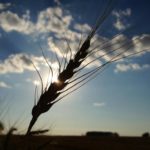
Falling Numbers Being Watched in MN Spring Wheat – As farmers in northwest Minnesota start spring wheat harvest, reports of low falling numbers are starting to trickle in. It’s still early on in harvest, but Crookston-based CHS Northland Grain procurement merchandiser Tyler Aandal says the situation is being closely watched. “If you look at our trade territory in northwest Minnesota, we would look at the central part of that area and down. That’s a little north of Highway 2 and south that seems to be a little more susceptible,” says Aandal. “Those are the hot spots and areas we’re watching closely.” Rains delayed harvest progress last week. “The wheat quality has been scattered, along with the rains,” says Aandal. “Overall, things are going well. Farmers are happy with yields, but the wheat protein is lower. Quality is the main driver right now and I hope the weather straightens out so farmers can finish harvest.”
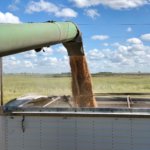
Extension Specialist Looking Into the Cause of Low Falling Numbers – From Crookston to Mahnomen, Minnesota, farmers are reporting low falling numbers in the spring wheat. The same thing happened last year. University of Minnesota Extension Small Grains Agronomist Jochum Wiersma was surprised at the reports, because he didn’t think there had been enough rain to cause pre-harvest sprouting. “I looked at the North Dakota Agricultural Weather Network records and most of the crop in the central Red River Valley reached physiological maturity around August 1. Since that time, most of the area has received three to five rain events larger than last year.” Wiersma is still a little uncertain why it’s happening and it’s likely still too early to say. “I don’t think there’s any indication that varieties from last year were susceptible to late maturity alpha-amylase. I think that’s still the case, but we had a cold snap in a time where it’s possible to create that.” Hear the full interview.

USDA Updates Prevented Planting Coverage – The USDA’s Risk Management Agency will be updating prevented planting coverage for most spring crops starting in 2021 and for all crops in 2022. These updates follow a big year for prevented plant across the country. A few of the changes include modifications to existing policy and procedure to ensure producers’ prevented planting payments reflect the crops the producer intended to plant and allowing the use of an intended acreage report for the first two years. Read more about the updates.

Northern Plains Farmers to Benefit from PP Coverage Updates – There will be some updates to prevent plant coverage for farmers starting next year. According to AgCountry Farm Credit Services Vice President of Insurance and Commodity Marketing Education Rob Fronning, here’s one of the bigger changes. “In reference to when we have added land in a new county, we can use the intended acreage reports for the first two years that we farm, compared to one year previously.” There’s another big change. “We have this common problem where we have a section of land that’s too wet to plant corn so farmers decide to plant a little bit of soybeans,” says Fronning. “If farmers can prove intent for the field to be corn, you can have pp corn even though you have soybeans planted and you don’t have to prove a two crop history. That’s probably the biggest impact I see for Northern Plains farmers.”
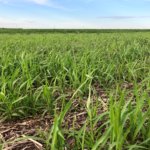
Ag Seeks a Permanent Fix for Cover Crops and PP Acres – Farmers, ranchers and agriculture groups in the Northern Plains are welcoming the September 1 date to graze and hay cover crops planted on prevent plant ground. In 2019, prevent plant acres were 3.9 million in South Dakota and 850,000 acres in North Dakota. As of July 31, 2020, North Dakota has over 2.5 million prevent plant acres, and South Dakota has over 1.2 million reported to the Farm Service Agency. That’s why NDFB Director of Public Policy Pete Hanebutt says “this flexibility is certainly welcome.” USDA made this same decision to move up the haying and grazing date last year. However, the announcement came two months sooner in June 2019. While the North Dakota Stockmen’s Association appreciates the flexibility, “permanent change is needed,” says NDSA President Dan Rorvig. The Cover Crop Flexibility Act has been introduced in Congress, which would provide permanent flexibility particularly for producers in the Northern Plains. Producers aren’t outright prohibited from haying or grazing before November, but 65 percent of their prevent plant indemnity would be lost. Listen to the story.
.
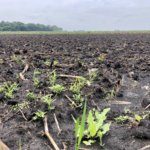
Prevent Plant Acre Increase Prompts Haying/Grazing Adjustment – The USDA’s Risk Management Agency is allowing earlier haying and grazing of cover crops on prevent plant acres for portions of the Dakotas. A backlog in livestock due to the COVID-19 pandemic and large amounts of prevent plant acres in the Dakotas are the reasons why local farmers can now hay or graze cover crops as early as September. When requests were made earlier in the year, Agriculture Secretary Sonny Perdue wasn’t sold on the effort, but Risk Management Agency Administrator Marin Barbre says the recent prevent plant acreage numbers were convincing. “As we’ve gathered more data on prevent plant acres compared to the normal acreages, we could see those areas were in need. We also felt like there was a need for forage in areas with livestock producers.” Forty-two counties in the Dakotas qualify for the relief. Hear the story.

Rural Perspectives – Southern portions of Minnesota and North Dakota are wrapping up spring wheat harvest. “I think yields have been average, for the most part,” says AgCountry Market Education Specialist Katie Tangen. While corn and soybean harvest are a way off in the Norther Plains, Tangen says crop conditions are holding up. The markets are keeping a close eye on corn and bean conditions. Hear more in this week’s Rural Perspectives podcast episode.
ND Roundtable Focuses on Wetland Easement Improvements – North Dakota Senators Kevin Cramer and John Hoeven hosted a roundtable discussion on Wednesday regarding recent U.S. Fish and Wildlife Service guidance. This guidance clarified pre-1976 wetland easement boundaries and offered a process to appeal wetland maps. Ellingson Companies Director of Government Affairs Levi Otis attended the meeting and says the appeals process isn’t working the way it was intended. “The U.S. Fish and Wildlife is under-sizing wetlands and spreading acres along potholes that aren’t wetlands. They’re not working with farmers to get these appeals done correctly.” U.S. Fish and Wildlife Service Director Aurelia Skipwith was part of this meeting. North Dakota Senator John Hoeven says she committed to face-to-face meetings with producers to better explain the process moving forward.
USDA Still Has Money to Spend on Producer’s COVID-19 Aid – American Farm Bureau Federation economist Michael Nepveux reviewed the latest data on the Coronavirus Food Assistance Program sign-up in a virtual panel discussion at Dakotafest. “CFAP payments going out the door have actually been slow. In early August, only 43 percent of available funds had been paid out. It’s difficult to talk about producers who have been left out of the program and the need for additional funding if they haven’t spent the money already given to them.” As of Monday, August 17, the USDA has distributed more than $9.02 billion in CFAP funds; an increase of $2 billion from the previous week. The USDA has also extended the sign-up deadline for the program to September 11.
Chairman Peterson Wants CFAP Issues Addressed – House Agriculture Committee Chairman Collin Peterson wants USDA to clarify how it determined the eligibility of different crops and livestock species for the Coronavirus Food Assistance Program. Peterson said USDA used data from the earliest part of the pandemic, missing the full extent of the losses. Hundreds of commodities were denied CFAP eligibility due to insufficient data and Peterson said that should be addressed.
MFBF Update – Farmers still have time to sign up for the USDA Coronavirus Food Assistance Program. Get the details from Minnesota Farm Bureau Federation Director of Public Policy Amber Glaeser in the MFBF Update.
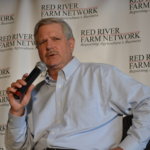
Ag Relief Faces September 30 Deadline – The USDA is on a deadline to spend $14 billion made available for agriculture in the CARES Act. Once September 30 arrives, North Dakota Senator John Hoeven said Commodity Credit Corporation funds will be replenished for a new fiscal year and this additional $14 billion could go away. Hoeven asked local farm groups for feedback on how to spend the money in a roundtable discussion on Friday. “We want that money delivered to farmers and we’re working with the agency to make sure it gets out while we work on what may or may not transpire in a new COVID-19 relief bill,” said Hoeven. “There’s the current Coronavirus Food Assistance Program happening and USDA also working hard on the $14 billion. Then, we’ll see what happens in terms of more COVID-19 relief and we’ll see what’s left of the $16.5 billion for CFAP.” USDA Deputy Administrator for Farm Programs Bill Beam was also part of the virtual discussion.
ND Farm Groups Provide Feedback on Coronavirus Assistance – Giving feedback in Friday’s roundtable discussion with Senator John Hoeven, the North Dakota Farmers Union and North Dakota Corn Growers Association asked for biofuels to be included in future COVID-19 relief. Other commodities, like potatoes, asked for more clarity and simplicity in future assistance. National Sunflower Association Executive Director John Sandbakken agreed. “Something to think about with the extra money could be an effort similar to a Market Facilitation Program per-acre payment. That may be easier for offices to administer,” said Sandbakken. “It could be based on certified acres on 2019 and cover the commodities not included in the first rounds. That could be another equitable way to get money to producers.”
Don’t Forget the WHIP+ Program Sign-Up – In a roundtable discussion on Friday, USDA Deputy Administrator for Farm Programs Bill Beam told North Dakota farm groups the USDA is taking a deeper dive into the WHIP+ program. “I’d like to encourage producers to sign up for the program. At some point, we have to land that ship. It looks like we have a long way to go for potential producers and there’s more potential for farmers.” Beam says the quality loss adjustment piece of the program isn’t rolled out yet, because of its complexity and the effort to not burden offices with more work. “We’re getting closer and closer, but no one could have predicted COVID-19 and I don’t think there’s anyone who would disagree this put us in a tailspin.” Beam was clear that farmers shouldn’t expect the program to be rolled out by the end of August and the software still needs to be developed.
Dry Bean Scene – This week’s Dry Bean Scene features a crop update from Walsh County, North Dakota area. The dry edible bean crop is in very good conditions, even excellent in some pockets. This program on the Red River Farm Network is made possible by the Northarvest Bean Growers Association, BASF, Johnstown Bean Company and SRS Commodities.

What’s Hot, What’s Not in the Markets – Did you know lumber prices tripled in price in the last 120 days? In this week’s edition of What’s Hot, What’s Not in the Markets, Advance Trading risk management advisor Tommy Grisafi highlights the outside markets and the latest news in the corn and wheat trade.
Derecho Damage Continues to Have a Market Impact – The USDA is predicting good corn and soybean crops in South Dakota and essentially, good crops across the country. While last week’s storm may not directly impact South Dakota farmers, Stone X Group Inc., Chief Commodities Economist Arlan Suderman says it does impact the markets. “The biggest yield losses will be in Iowa and northern Illinois. How much those losses are will be directly impacted by how much gets harvested,” says Suderman. “There’s talk now about giving farmers greater freedom to make that decision whether or not they’ll take their expensive machines and run the debris through to harvest a lower quality, cheap corn.” That’s where the biggest unknowns are going to be on the final losses. “I’m estimating actual bushel losses between 200 and 400 million bushels; we could see bigger losses if the crop isn’t harvested.”
No Major Seed Supply Concerns After Derecho – U.S. Commodities President Don Roose says the major Derecho wind storm destroyed thousands of crop acres across Iowa, including seed production. However, seed supply doesn’t seem to be a concern. “Seed companies realize they can’t lose seed in catastrophic areas all over,” explains Roose. “They try to spread that out from a risk standpoint.” Seed companies typically have production overseas to make up for any losses.
Canola Minute – This time of year is perfect for farmers to be scouting for clubroot in canola. Learn more from Northern Canola Growers Association Executive Director Barry Coleman in the latest Canola Minute.
Production and Demand Tug-of-War in Grain Markets – Utterback Marketing president Bob Utterback says the grains are caught in a tug-of-war between production and demand. Prevented plant is having an impact on production. “That reconfirms the June acreage numbers. Now, the bear lost the advantage of an acreage surprise or more production. On top of that, you throw on the bad weather that just came through Iowa and Illinois.” Utterback says the uncertainty of crop damage caused traders to cover their short positions. “Now, we’ve reached this new level where the bulls want to push things higher, but they think the yield is lower, but they need solid facts. They won’t have those facts until they are out in the field.”
Decoupling – During a Fox News interview Sunday, President Donald Trump said the U.S. could ‘decouple’ and not do business with China. Trump said the United States does not have to do business with China. Trump has repeatedly voiced his dissatisfaction with China’s handling of COVID-19.
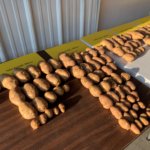
Northern Plains Potato Growers Association Hosts Virtual Field Day – The Northern Plains Potato Growers Association is launching their virtual field day this week. NDSU Extension and University of Minnesota Extension Potato Agronomist Andy Robinson says there will be a look at the potato breeding programs. “Growers will be able to see new, upcoming varieties they’re working on and the plant pathologists will talk about some diseases being seen in potatoes and there will be agronomy and entomology covered during the virtual event.” This will be an informal event. “People will have access to the videos whenever they want to watch them and contact the presenters by e-mail if there are further questions.” Watch the virtual field day presentations.
Potato News – Campbell Farms owner Tom Campbell says the fresh potato harvest in Big Lake, Minnesota is running a bit behind schedule, but the crop looks good. Hear more about harvest in this week’s Potato News, made possible by Corteva Agriscience, Bayer, Sipcam Agro and BASF’s Provysol fungicide, the new standard for early blight.
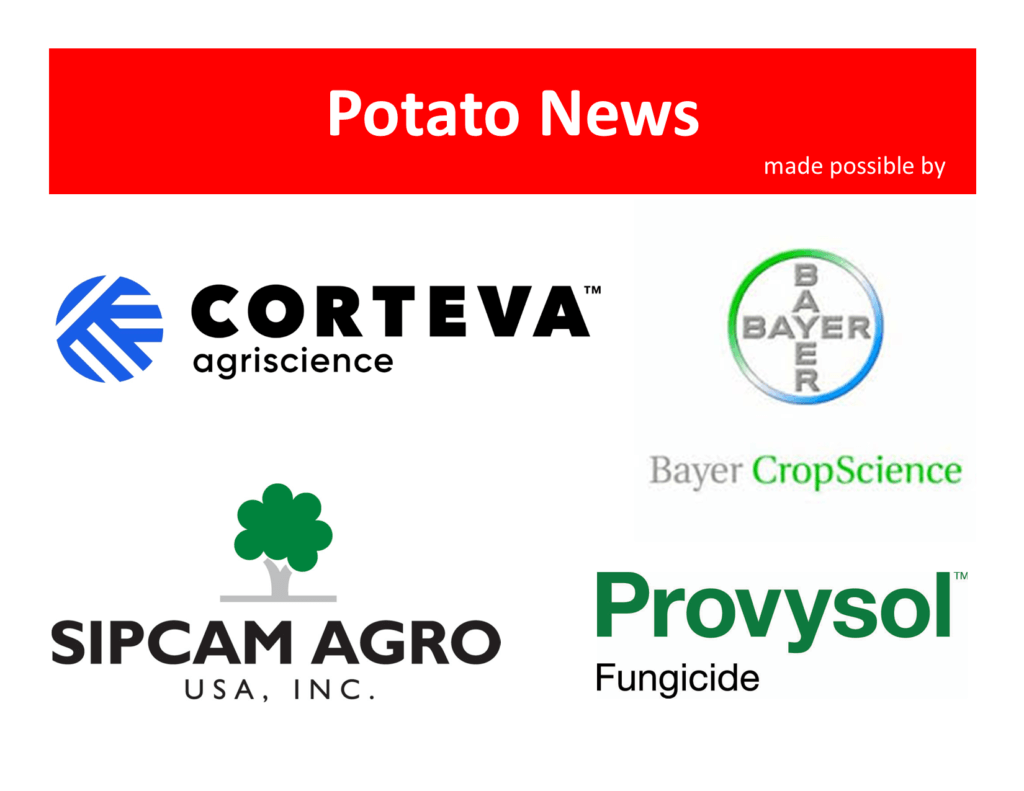
July Milk Production Rose 1.5 Percent – Milk production in the 24 major states totaled 17.8 billion pounds in July. That was up 1.5 percent from one year ago. Minnesota milk output also increased 1.5 percent. That increase came despite a 5,000 head decline in the cow herd. South Dakota had the biggest increase, up 11.5 percent. Over the past year, South Dakota dairies added 13,000 cows. Wisconsin milk production rose zero-point-five percent.
Support for Selling State-Inspected Meat Outside of State Lines – South Dakota Interim Secretary of Agriculture Larry Rhoden said there’s a silver lining in the COVID-19 pandemic; a wake-up call for consumers. “At least for the time being, consumers understand the fragility of our food system and the need to expand competition in the food industry and expand processing. There’s federal legislation getting attention, including a bill allowing state inspected meat to be sold outside of state borders.” Rhoden said this would help state processors broaden the markets in a time where there’s high demand. “We’ve also had conversations at the executive level with the president’s office with the possibility of getting an executive order put together to allow that. If that’s done, it would be a good test run to prove the sky isn’t going to fall if we allow state inspected meat to be sold outside of borders.” Rhoden was part of a Dakotafest panel discussion.
MN Beef Update – The Minnesota Beef Council is making sure fitness is powered by beef. Learn more from Communications Director Becky Church in the latest Minnesota Beef Update.
NPPC and NMI File Amicus Brief – The National Pork Producers Council and the North American Meat Institute have filed a friend of the court brief with the U.S. District Court of Minnesota, supporting USDA’s new swine health inspection system. The voluntary program allows for rapid adoption of new food safety technologies with the potential to increase slaughter capacity. Earlier this year, labor unions challenged this system in court. The NPPC said the loss of this updated inspection system could cut packing capacity at a time when the industry is already under stress due to the pandemic.
Another Delay for Enbridge Pipeline – The Walz Administration is appealing the approval of the Enbridge Line 3 pipeline. The Minnesota Public Utilities Commission issued a certificate of need this past spring, but the appeal claims that decision did not consider the drop in oil demand due to the pandemic. Minnesota Congressman Collin Peterson voiced his frustration, saying this project would create jobs and add property tax revenue for counties across northern Minnesota.
ND Harvest Hotline Activated – North Dakota Agriculture Commissioner Doug Goehring has activated the North Dakota Harvest Hotline to match custom harvesters with farmers who need custom combining help. North Dakota Department of Agriculture employees will answer calls 8 a.m. to 5 p.m. weekdays at 701-425-8454. A self-serve Harvest Hotline map is also available this year.

Parade of Champions: Maren Hoban – Maren Hoban of Detroit Lakes, Minnesota is still staying active showing cattle and pigs this summer, even despite the cancellation of the state fair. “Every year I look forward to seeing my friends at state fair that I only get to see once a year,” she says. “This year I actually became a Minnesota 4-H Agriculture Ambassador. I was definitely looking forward to that during 4-H weekend.” Hear more from Maren in this Parade of Champions interview. This Red River Farm Network effort is made possible by AgCountry Farm Credit Services, NDFB, Minnesota Farmers Union, Minnesota Corn Growers Association, North Dakota Grain Growers Association and Association Milk Producers, Incorporated.
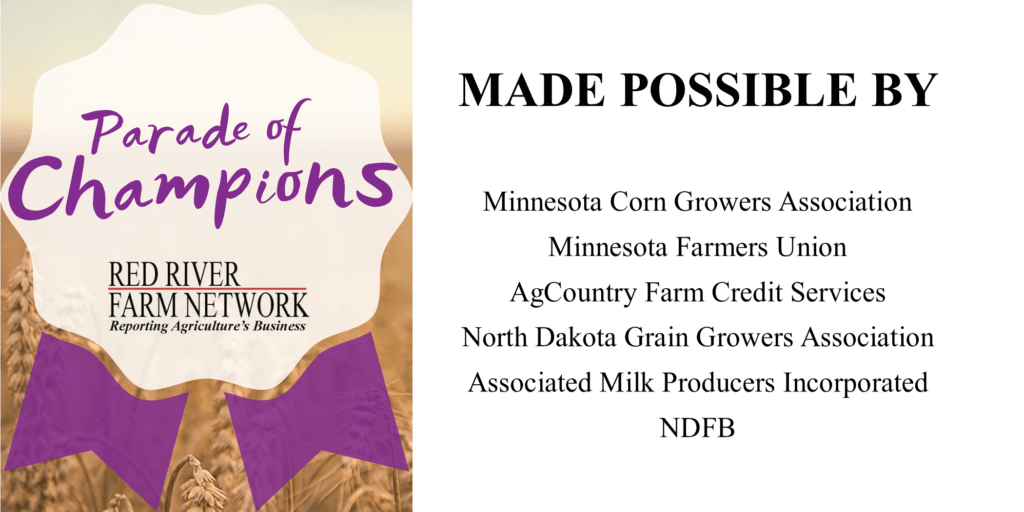
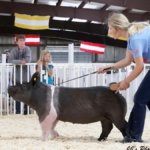
Parade of Champions: Lynsey Schmitz – Oakes, North Dakota native Lynsey Schmitz got creative showing livestock during the COVID-19 pandemic. Her family hosted a hog show called Showdown on the Red in Fargo. “We had people from five different states and more than 200 pigs.” There were other shows to attend this summer, too. While the North Dakota State Fair was cancelled, exhibitors were invited to attend the COVID Clash Junior Livestock Show. “They had humongous a tent with the panels from the state fair,” said Schmitz. “It was probably one of the best run shows I’ve attended this year.” Schmitz is a sophomore, attending the North Dakota State College of Science. Hear Schmitz’s Parade of Champions story. This Red River Farm Network effort is made possible by AgCountry Farm Credit Services, NDFB, Minnesota Farmers Union, Minnesota Corn Growers Association, North Dakota Grain Growers Association and Association Milk Producers, Incorporated.
9th Circuit Court Rejects Request for a Rehearing on Dicamba Registration – The U.S. Supreme Court is the only option left for Bayer, Corteva Agriscience and BASF to overturn the decision to vacate the registration of Xtendimax, FeXapan and Engenia. The 9th Circuit Court of Appeals rejected a request for a rehearing before the full panel of judges. That leaves the court’s June dicamba ruling in place. Bayer, Corteva and BASF are seeking EPA re-registration of their dicamba products for the 2021 growing season.
Deere and Company Reports Q3 Net Income Decline – Deere and Company is reporting third quarter net income of $811 million, down roughly 10 percent from the third quarter one year ago. Deere reports net income for the first nine months of fiscal year 2020 is $2 billion compared to $2.5 billion one year ago. Read more quarterly results.
A Rebranding for Glencore Agriculture – Glencore Agriculture is rebranding itself as Viterra. Viterra was acquired by Glencore eight years ago. Glencore Agriculture CEO David Mattiske described Viterra as “a globally recognized brand.”
The Nitrogen Smart Program training can now be taken online. Learn more from University of Minnesota Extension Educator Brad Carlson in Corn Matters, an update from the Minnesota Corn Growers Association.
RRFN Celebrate 25th Anniversary at KPMI-Bemidji – The Red River Farm Network is celebrating its 25th anniversary this year. On Friday, RRFN made a stop at KPMI AM 1300 ‘The Legends’ in Bemidji. Legends has a classic country format. In addition, KPMI delivers farm news, markets and weather news from RRFN. Responding to the uncertain economy and the coronavirus pandemic, KPMI is promoting a ‘shop local’ effort with 218 Together. (Pictured: RRFN Prjesident Don Wick with KPMI General Manager Mark Ricci.)
New Record for FFA – Student membership in the National FFA Organization is at a record high. Membership has topped 760,000, up 60,000 from last year. The top five membership states are Texas, California, Georgia, Florida and Oklahoma.
Rural America 2020 Announces MN Steering Committee – The Democrats have launched a new campaign to educate and activate rural voters. Six states have formed a grassroots steering committee. In Minnesota, former Agriculture Commissioner Dave Frederickson is the chair. Committee members include former state FSA director Grant Herfindahl, former USDA Rural Development State Director Colleen Landkamer, former Assistant Agriculture Commissioner Susan Stokes, former Agriculture Commissioner Jim Nichols and Milan farmer Kent Kanten.
Farmers & Ranchers for Trump Committee Formed – The Trump reelection campaign has named the members of Farmers and Ranchers for Trump. This committee is chaired by Charles Herbster, who is a Nebraska cattleman and CEO of the Conklin Company. Numerous state agriculture commissioners, including North Dakota Agriculture Commissioner Doug Goehring, are part of the 19-member committee.
SD Corn Comments – The 2020 Corn Cob Open golf outing sponsored by the South Dakota Corn Growers Association was recently held. Hear more in the latest Corn Comments program, a production of the South Dakota Corn Utilization Council.
DeMarchi Selected for North American Millers’ Association Leadership Role – Jane DeMarchi will soon take over as president of the North American Millers’ Association. DeMarchi is now the vice president of government and regulatory affairs with the American Seed Trade Association. Previously, she had a similar role with the National Association of Wheat Growers.
Armour Joins NDSGA Staff – Betsy Armour has joined the North Dakota Soybean Growers Association staff to lead its digital marketing, social media and communication efforts. Armour previously worked for Seeds 2000, the North Dakota Corn Council, Northarvest Bean Growers Association and Northern Crops Institute.
Gravunder Joins Hurley Team – Hurley & Associates has hired Luke Gravunder as a farm marketing consultant. Gravunder is a Wisconsin native and a graduate of North Dakota State University. Gravunder is in Hurley’s Glenwood, Minnesota office and will work primarily with clients in North Dakota.
Moynihan Honored With ‘Friend of Agriculture’ Award – The Minnesota Association of Ag Professionals has awarded Meg Moynihan with its ‘Friend of Agriculture’ Award. Moynihan works for the Minnesota Department of Agriculture and was recognized for her work on mental health issues in agriculture.
Longtime ND Legislator Passes – Funeral services were held Saturday for State Senator Bill Bowman. The 75 year old went into the implement business in the late 1970s. Before that, Bowman farmed and ranched. As a legislator, Bowman served on the agriculture and appropriations committees. This past year, Bowman was honored with the NDSU Harvest Bowl Agribusiness Award.
Rep. Lieder Passes – Longtime legislator Bernie Lieder passed away Saturday at the age of 97. Representative Lieder, who lived in Crookston, was in the state legislator from 1985-to-2011. Lieder served on the agriculture, transportation and veterans affairs committees.
Last Week’s Trivia – Micheal Phelps was a record-breaking Olympic swimmer for the United States. Dazey farmer Jim Broten wins our weekly trivia challenge. Erin Nash of the National Association of Farm Broadcasting, Bob Volk of Simplot Grower Solutions, longtime Farm Business Management instructor Bob Roesler and Eric Lahlum of Corteva earn runner-up honors. The ‘first 20’ rounds out with Paul Sproule of Sproule Farms, Bob Lebacken of RML Trading, Mandy Kvale of Farm Credit Services of Mandan, Gary Sloan of BMO Harris Bank, Jim Altringer of CHS Dakota Plains Ag, Carver County feedlot officer Alan Langseth, Guy Geske of Latham Seed, Ron Dvergsten of Northland FBM, Pete Carson of Carson Farms, Phyllis Nystrom of CHS Hedging, Kevin Praska of Stone’s Mobile Radio, Al Wimpfheimer of Simplot, retired controller Evonne Wold, Kevin Schulz of National Hog Farmer and Sara O’Toole of O’Toole Seed.
This Week’s Trivia – Manchego, camembert, stilton, gouda and asiago are different types of a specific food. What is it? Send your answer to don@rrfn.com.
| RRFN Upcoming Events | |||
| August 24, 2020 - August 28, 2020 | RRFN Crop Tour Presented by Pioneer | ||
| August 25, 2020 | I-29 Moo University Dairy Outlook - Online Webinar | ||
| August 26, 2020 | Minnesota State Fair Webinar - Online | ||
| August 26, 2020 | Livestock Environmental Training for CAFOs Workshop - Online Webinar | ||
| August 27, 2020 | SDSU Extension Pest and Crop Q&A - Online Webinar | ||
| August 31, 2020 | Farmland for the Next Generation - Online Webinar | ||
| September 3, 2020 | SDSU Extension Pest and Crop Q&A - Online Webinar | ||
| September 3, 2020 - September 7, 2020 | South Dakota State Fair - Huron, SD | ||
| September 9, 2020 | Reducing and Upcycling Minnesota Food Processing Waste - Online Webinar | ||
| September 10, 2020 | MN Renewable Energy Roundtable - Online Webinar | ||
| September 10, 2020 | NDGDA Harvest Break Golf Tournament | ||
| September 15, 2020 - September 17, 2020 | Big Iron Farm Show - West Fargo, ND | ||
| September 18, 2020 | SDSU Extension Ag Economic Dialogue - Online Webinar | ||
| Contact RRFN | Don Wick (701) 795-1315 |
Randy Koenen (701) 795-1315 |
Whitney Pittman (701) 795-1315 |
Tyler Donaldson 701-795-1315 |
| RRFN Affiliate Stations | |||
| Aberdeen, SD – 105.5 FM | Ada, MN – 106.5 FM | Bagley, MN – 96.7 FM | Bemidji, MN – 1300 AM |
| Benson, MN – 1290 AM | Bismarck, ND – 1270 AM | Bismarck, ND – 1270 AM | Casselton, ND – 103.9 FM |
| Crookston, MN – 1260 AM | Devils Lake, ND – 103.5 FM | Fergus Falls, MN – 1250 AM | Fosston, MN – 1480 AM |
| Glenwood, MN – 107.1 FM | Grafton, ND – 1340 AM | Jamestown, ND – 600 AM | Langdon, ND – 1080 AM |
| Mahnomen, MN – 101.5 FM | Mayville, ND – 105.5 FM | Roseau, MN – 102.1 FM | Rugby, ND – 1450 AM |
| Thief River Falls, MN – 1460 AM | Wadena, MN – 920 AM | Worthington, MN – 730 AM | |
FarmNetNews is a production of the Red River Farm Network. RRFN is based in Grand Forks, North Dakota and provides news to farmers and ranchers across Minnesota, North Dakota and South Dakota.

- Follow RRFN on